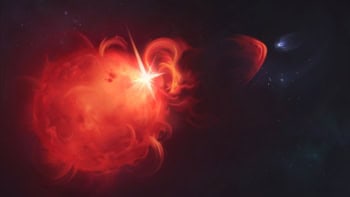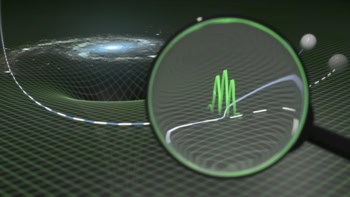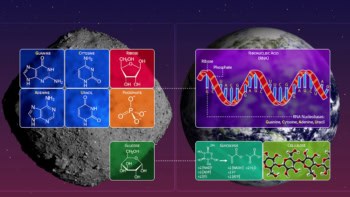Last year’s reports that the BICEP2 telescope had uncovered evidence for cosmic inflation turned out to be a false alarm, but researchers in the field haven’t given up. Matthew R Francis describes how a new generation of telescopes is entering the hunt
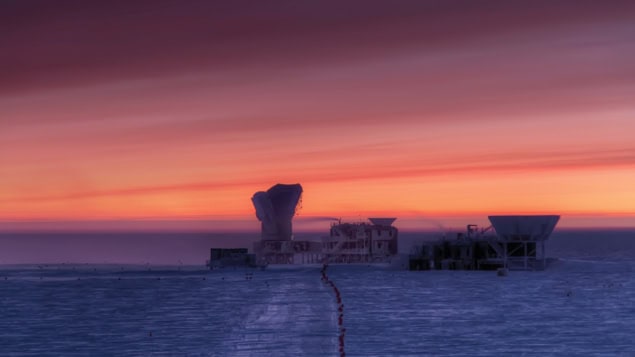
The cosmos hides its origins well. For the first 380,000 years of its existence, the entire universe was an opaque stew of hot plasma, full of light and matter. The opacity of this “primordial soup” prevents us from directly observing many important moments in cosmic history, including the first instants after the Big Bang, when the universe may – or may not – have expanded rapidly, increasing its size many-fold in a hypothetical period known as inflation. Yet all is not lost. Observing the very early universe is akin to watching a shadow theatre: while the true action takes place behind a screen, we can nevertheless infer what’s going on by the images cast.
According to many theories, the CMB should contain signs of the universe’s inflationary infancy
In this metaphor, the images are the light known as the cosmic microwave background (CMB). When the cosmos became a transparent gas of atoms, the light from the primordial soup was freed to travel all the way until it reaches us in the present, providing a very clean view of the first years of cosmic history. Better still, imprinted in the CMB are hints of what came before. Fluctuations in the CMB tell us, for example, the geometry of the universe and how much ordinary and dark matter it contains. And according to many theories, the CMB should also contain signs of the universe’s inflationary infancy.
In 2014 scientists working on the BICEP2 (Background Imaging of Cosmic Extragalactic Polarization) telescope announced they had seen evidence of inflation in the CMB. This claim was met first with enthusiasm, then with scepticism as data from the space-based Planck observatory demonstrated that the signal interpreted as inflation could, in fact, be entirely accounted for by dust molecules in the Milky Way. It’s as though the shadow-theatre screen were dirty, making it hard to tell what’s really going on behind it.
But while it’s wrong to say that BICEP2 discovered evidence for inflation, it’s just as wrong to say that Planck ruled it out. Dust never settles for long on cosmology, and now that researchers have a much better idea of what the observational challenges are, they are hard at work addressing them. “Sometimes people express more pessimism than I think that they should, because there are many experiments going forward,” says Renée Hložek, a cosmologist at Princeton University. The experiments Hložek mentions include an upgrade to the South Pole-based BICEP2 (called, a bit unimaginatively, BICEP3); the Atacama Cosmology Telescope polarization project (ACTPol) in Chile; and a balloon-borne telescope called Spider, which flew high in the Antarctic sky in January.
These experiments are designed to compensate for the weaknesses of the Planck and BICEP2 observations. Between them, we should know within the next few years if there really is any sign of inflation hiding in the CMB data, as observations from all of them are combined and compared to give us our clearest view yet of the shadow-play that is the early cosmos.
Inflation’s ‘smoking gun’
Despite their different characteristics, all of these next-generation experiments are looking for the same thing. According to inflationary theory, the extremely rapid expansion during the first tiny split second after the Big Bang – during which the universe grew perhaps by as much as a factor of 1060 – should have created primordial gravitational waves, which are turbulent churnings of the structure of space–time itself. Those waves stretched and compressed the cosmic plasma, affecting the way it interacted with the light infusing it. The result: a subtle but distinctive curl in the polarization of CMB light. Because the form of the polarization looks like the twisting of a magnetic field, or B-field, the gravitational-wave polarization is known as a “B-mode”.
Generally speaking, though, polarization is just the orientation of the electric field in the electromagnetic wave that is light, and many different things can affect that orientation. And therein lies the rub. Light from the CMB took 13.8 billion years to travel to us, and it encountered a lot of things on its journey: galaxies, clusters of galaxies and finally dust inside our own Milky Way. As researchers with the Planck observatory discovered to the dismay of many, light emitted from spinning molecules in galactic dust can mimic the polarization patterns from primordial gravitational waves. If that wasn’t bad enough, the joint analysis of Planck and BICEP2 data showed that dust could possibly account for the entire reported inflationary signal.
But could is the operative word. “It’s now known how much dust is there, so we know what we have to deal with,” says Arizona State University cosmologist Sean Bryan. That knowledge helps, because galactic dust glows more brightly in some frequencies than others. And whereas BICEP2 operated primarily at a single frequency of microwave light, the next wave of observatories scans the sky at multiple frequencies. By comparing polarization data taken at frequencies where the dust signal is strongest to data taken where it’s least important, researchers can effectively subtract its effects. That leaves – maybe – the telltale sign of primordial gravitational waves.
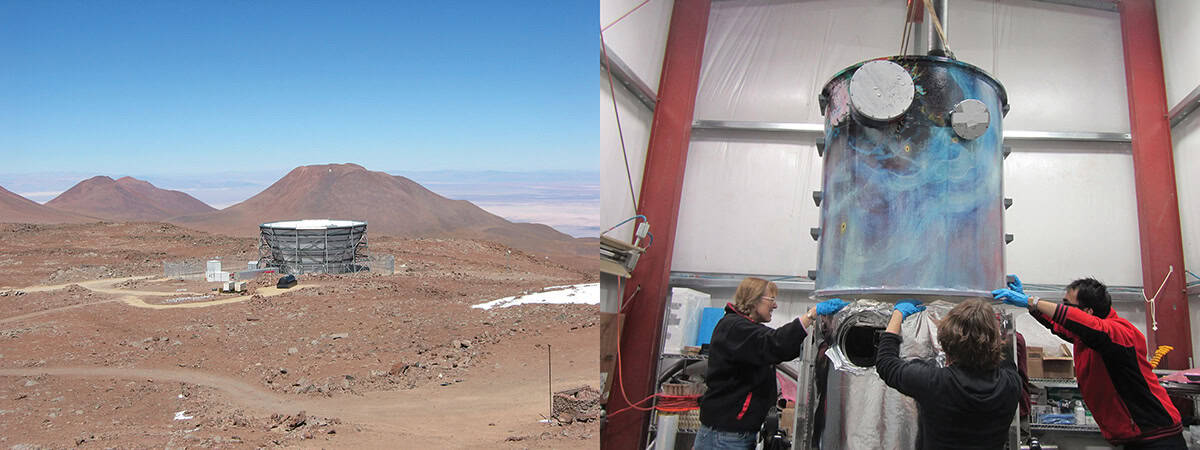
Many eyes in the sky
Bryan has reasons to be excited by that prospect. As a graduate student at Case Western Reserve University, he helped develop the instruments for Spider, the airborne experiment that launched near Antarctica’s McMurdo Station on New Year’s Day this year. (“Spider” was originally an elaborate acronym of the type favoured by cosmologists, but it became the experiment’s official name as the mission evolved.) Suspended beneath its building-sized balloon, Spider travelled through the upper atmosphere for 16 days, scanning the sky with a telescope 30 cm across. After the researchers retrieved the data from the ice, they got to work analysing it, and they hope to announce their findings by this autumn.
Spider uses two sets of detectors that operate under the same principle as many 3D movie glasses: one set is sensitive to vertically polarized light, while the other picks up horizontal polarization. But instead of combining two slightly different images to create the illusion of depth, researchers with Spider use images from each detector to reconstruct the variations in polarization across the sky.
BICEP3, for its part, operates on very similar principles. As Bryan points out, the successor to BICEP2 is nearly the same instrument as Spider: the telescopes are the same, they scan the same frequencies (90, 150 and 220 GHz) and they were built with identical detectors. In both instruments, these detectors are chilled to a fraction of a degree above absolute zero; because the light from the CMB corresponds to a temperature of 2.7 K, the type of detectors in Spider and BICEP have to be colder than that to see anything at all, and the colder they are, the more accurate their results will be.
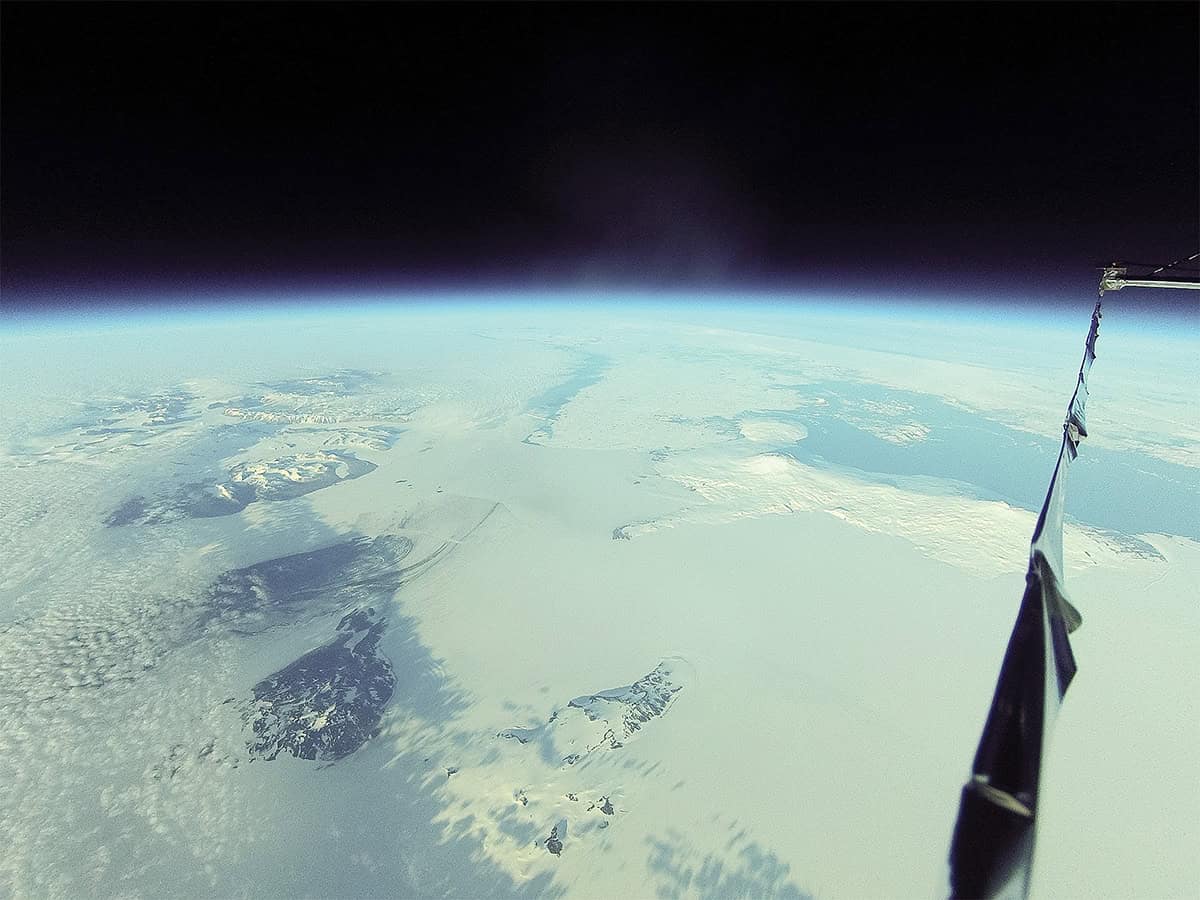
The main difference lies in where they are designed to operate. Spider flew approximately 34 km above the ground, where the air pressure is 0.1% of what it is at sea-level. While it did not travel to space per se, photos from Spider’s onboard GoPro camera show a space-black sky above, even as the ground below is in full Antarctic summer sunlight. BICEP3, meanwhile, is located on the ground at the South Pole. As Bryan points out, ground-based telescopes must account for the small amount of light coming from the atmosphere itself and subtract it (much as visible-light telescopes must do to compensate for stars “twinkling”); Spider flew sufficiently high that it didn’t need to perform that subtraction.
The Atacama Cosmology Telescope, on the other hand, is an entirely different beast. A 6 m-diameter instrument, it operates at five frequencies (30, 40, 90, 150 and 230 GHz, overlapping the BICEP3 and Spider range) and Hložek explains that its mission is quite broad. As well as looking for signs of inflation in the CMB, it will also investigate topics such as what the first stars were like and how the universe shifted from the neutral, opaque primordial soup to the thinner, mostly ionized environment we observe today.
But while the search for primordial gravitational waves makes up only part of the ACT’s mission, it is nevertheless in a prime position to contribute to the hunt. The ACT points at a fixed angle relative to the ground, but it can rotate from side to side, and since different parts of the sky come into its field of vision over the course of a year, it will eventually map a much broader region than either BICEP3 or Spider in microwave light. The ACT’s location in the high, dry Atacama Desert also gives it a different swath of the sky to observe compared with the Antarctica-based Spider and BICEP3, but crucially, it also overlaps, in part, with the relatively small BICEP3 field of view. “It’s actually really important to have multiple experiments looking for slightly overlapping multiple ranges of the sky, because that allows us to independently check stuff,” says Hložek. The cosmic-dust component of BICEP2’s signal, she notes, was first identified by comparing Planck and BICEP measurements of the same patch of sky.
Best and worst cases
This suite of well-designed experiments makes Hložek optimistic that we’ll find the polarization footprint of inflation, if it’s there to be found. University College London cosmologist Hiranya Peiris is among those eagerly awaiting the results. Peiris is deeply involved in both the theoretical and observational sides of the quest to understand the very early cosmos, and she is particularly interested in inflation, which she describes as less a theory than a whole set of mathematical models. While inflation predicts that there will be primordial gravitational waves, she explains, different models of inflation predict different amplitudes. That means it’s important to have specific predictions that can be tested against real data from the observatories, Peiris says – but it also means that the polarization signal from inflation could be too weak for even the next generation of experiments to detect it.
In many ways, that would be the worst-case scenario for inflation researchers, because the lack of a clear signal wouldn’t rule out inflation entirely – it would just keep us in doubt for longer about what happened in the moments after the Big Bang. Even in that case, though, Peiris still sees a benefit. “Just to rule out that class of models that gives you the high-scale inflation is a very significant achievement in itself,” she says. And in the best-case scenario, she adds, studies of cosmic inflation would give us a direct view into the kind of “very very high-energy physics that we can’t probe in the laboratory”. With that prize in mind, Peiris says that if problems such as cosmic dust limit the progress that can be made from the ground, “there is a call here to think about the next-generation space-based experiment”.
When faced with the challenges of observation, Bryan keeps in mind how marvellous it is that we’re studying the early universe at all. “Stepping back, it’s really exciting to make a measurement that even relates to this,” he says. Our ultimate cosmic origins may be hiding now, but the cleverness of cosmologists may yet pull aside the shadow-theatre screen to reveal inflation – or something unexpected.

